GPS and Geocaching in Education
Burt Lo
2010 International Society for Technology in Education
World rights reserved. No part of this book may be reproduced or transmitted in any form or by any meanselectronic, mechanical, photocopying, recording, or by any information storage or retrieval systemwithout prior written permission from the publisher. Contact Permissions Editor: ; fax: 1.541.302.3780.
Director of Book Publishing: Courtney Burkholder
Acquisitions Editor: Jeff V. Bolkan
Production Editors: Tina Wells, Lynda Gansel
Production Coordinator: Rachel Williams
Graphic Designer: Signe Landin
Developmental Editor: Mike van Mantgem
Copy Editor: Krstin Painter
Proofreader: Barbara J. Hewick
Indexer: Seth Maislin, Potomac Indexing
Cover Design, Book Design, and Production: Gwen Thomsen Rhoads
Library of Congress Cataloging-in-Publication Data
Lo, Burt.
GPS and geocaching in education / Burt Lo.
p. cm.
Includes index.
ISBN 978-1-56484-275-6 (pbk.)
1. Geocaching (Game) 2. Global Positioning System. I. International Society for Technology in Education. II. Title.
GV1202.G46L62 2010
623.893dc22
2010027062
First Edition
ISBN: 978-1-56484-275-6
Printed in the United States of America
Cover Photos: iStockphoto.com/Susie Haines, Burt Lo,
iStockphoto.com/Shantell, iStockphoto.com/Robert Dant
Inside Photos: ,
iStockphoto.com/Lara Seregina, iStockphoto.com/imagedepotro, Apple,
: Burt Lo
ISTE is a registered trademark of the International Society for Technology in Education.
About ISTE
The International Society for Technology in Education (ISTE) is the trusted source for professional development, knowledge generation, advocacy, and leadership for innovation. ISTE is the premier membership association for educators and education leaders engaged in improving teaching and learning by advancing the effective use of technology in PK12 and teacher education.
Home of the National Educational Technology Standards (NETS) and ISTEs annual conference and exposition (formerly known as NECC), ISTE represents more than 100,000 professionals worldwide. We support our members with information, networking opportunities, and guidance as they face the challenge of transforming education. To find out more about these and other ISTE initiatives, visit our website at www.iste.org.
As part of our mission, ISTE Book Publishing works with experienced educators to develop and produce practical resources for classroom teachers, teacher educators, and technology leaders. Every manuscript we select for publication is carefully peer-reviewed and professionally edited. We value your feedback on this book and other ISTE products. E-mail us at .
International Society for Technology in Education (ISTE)
Washington, DC, Office:
1710 Rhode Island Ave. NW, Suite 900, Washington, DC 20036-3132
Eugene, Oregon, Office:
180 West 8th Ave., Suite 300, Eugene, OR 97401-2916
Order Desk: 1.800.336.5191
Order Fax: 1.541.302.3778
Customer Service:
Book Publishing:
Book Sales and Marketing:
Web: www.iste.org
About the Author
 Burt Lo is a technology professional development coordinator with the California Technology Assistance Project. He earned a masters of education degree in Information Technology and is a Google Certified Teacher. His instructional experience includes teaching middle school in California and teaching all ages in Taiwan. He has presented at state and national educational technology conferences to assist K12 teachers with integrating video editing, podcasting, and Google Tools into their classrooms.
Burt Lo is a technology professional development coordinator with the California Technology Assistance Project. He earned a masters of education degree in Information Technology and is a Google Certified Teacher. His instructional experience includes teaching middle school in California and teaching all ages in Taiwan. He has presented at state and national educational technology conferences to assist K12 teachers with integrating video editing, podcasting, and Google Tools into their classrooms.
After becoming a geocaching fan and hobbyist, Burt began to use geocaching as an engaging teaching and learning activity in the classroom. This exploration has included investigating geocaching as part of the curriculum for a sixth grade outdoor education week in California and introducing geocaching to teachers and administrators during conference workshops.
Acknowledgments
This book would not have been possible without the support of many people. First and foremost, I would like to thank Sonny, Sandy, and Sean Portacio. Sonny and Sandy introduced me to geocaching during a session at the 2006 NECC in San Diego. In addition to getting me started with geocaching, they continue to expand my knowledge about geocaching through their weekly Podcacher podcast.
Secondly, I want to acknowledge Mike van Mantgem for providing assistance and guidance through the book writing process. It takes much more than ideas, time, and a word processor to write a book. Mike was an excellent guide through the entire process of organizing my ideas, making sure that content needed by new geocachers was included and selecting images that clarified the content.
Finally, I need to thank my family for their support for this project. Hopefully Vicky, Robert, Elizabeth, and Emma have enjoyed geocaching as much as I have enjoyed their company on our geocaching journeys.
Contents
PART I
GPS and Geocaching
CHAPTER 1
Introducing GPS and Geocaching
CHAPTER 2
Getting Started: Geocaching Basics for Educators
CHAPTER 3
Caching Your World: A Quick Tour
PART II
Geocaching in the Classroom and Beyond
CHAPTER 4
Geocaching across the Curriculum
CHAPTER 5
Lesson Plans
CHAPTER 6
Geocaching Professional Development
APPENDIX A
Resources
APPENDIX B
Glossary of GPS and Geocaching Terminology
APPENDIX C
National Educational Technology Standards
ADVISORY
Students should be closely supervised when engaging in geocaching activities, whether on or off school premises. Neither the author nor ISTE shall be responsible for any injuries or damages that may occur as a result of geocaching activities.
INTRODUCTION
An Introduction
to Adventure
I n 2006, while attending the National Educational Computing Conference (now known as the ISTE Conference and Exposition) in San Diego, I noticed that there were some hands-on sessions and presentations about geocaching. I had heard the term and had an understanding of the concept of geocaching, so I decided to spend part of the conference finding out more.
Fortunately, some geocaching zealots had also set up a geocaching course for conference attendees. This meant we could experience geocaching for ourselves. I found some time to explore downtown San Diego through the eyes of a geocacher and became hooked.
This book is my attempt to re-create that experience, and I would like nothing more than to introduce educators to the world of geocaching and to help them explore strategies for integrating geocaching into the classroom.


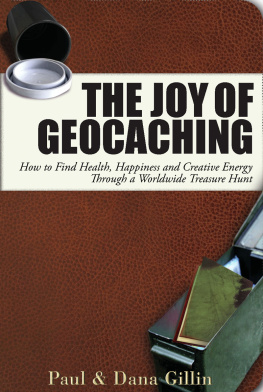

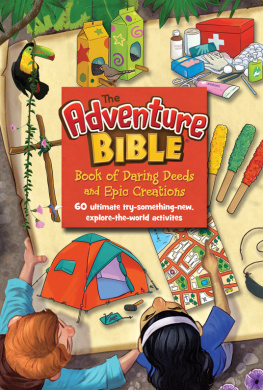
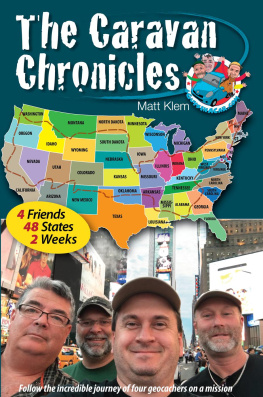
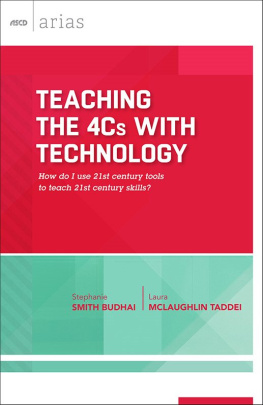
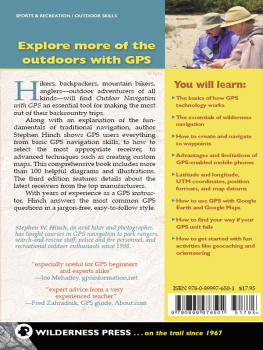
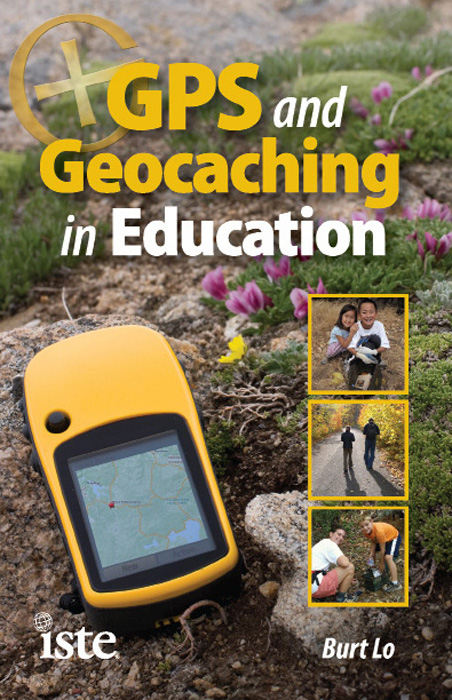
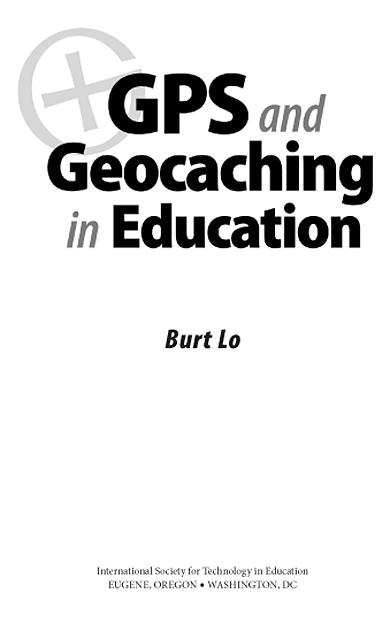
 Burt Lo is a technology professional development coordinator with the California Technology Assistance Project. He earned a masters of education degree in Information Technology and is a Google Certified Teacher. His instructional experience includes teaching middle school in California and teaching all ages in Taiwan. He has presented at state and national educational technology conferences to assist K12 teachers with integrating video editing, podcasting, and Google Tools into their classrooms.
Burt Lo is a technology professional development coordinator with the California Technology Assistance Project. He earned a masters of education degree in Information Technology and is a Google Certified Teacher. His instructional experience includes teaching middle school in California and teaching all ages in Taiwan. He has presented at state and national educational technology conferences to assist K12 teachers with integrating video editing, podcasting, and Google Tools into their classrooms.